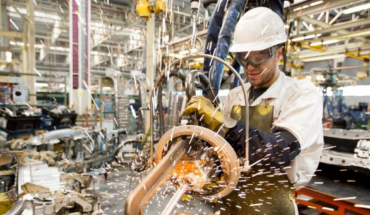At the beginning of 2020, for the mobile quarter December 2019 – February 2020, the Region of La Araucanía registered almost 450 thousand employed people (449,350 to be exact); an unemployment rate of 6.4% and a labor participation of 59.4%. In March 2020, the Covid-19 pandemic would arrive in Chile and, with it, an unprecedented health crisis, but also the economic and social effects would be felt on economic activity and employment. La Araucanía was not oblivious to this panorama and in fact was one of the regions hardest hit in terms of job losses, this is how the worst moment of the pandemic in terms of employment for the region was the May-July 2020 quarter, where the number of employed fell to 311,480 people, that is, in a couple of months 31% of the jobs that existed at the beginning of the year were destroyed, a hard blow for the poorest region of Chile and with greater labor informality.
After that complex quarter, regional employment was strongly affected, to which are added the health restrictions resulting from the pandemic that did not allow the normal and complete operation of a large part of the companies and dependent and independent sources of employment, which despite state aid hindered the recovery of the regional labor market. At the end of 2020 (November 2020 – January 2021 quarter), the total number of employed people reached 350,260 people, still far from the stock of employed in the pre-pandemic period. 2021 arrives and the employment situation continues to improve slowly hand in hand with the improvements observed in the development of the pandemic and with the relaxation of restrictions. The truth is that 2021 ends with a total of 401,480 people employed, recovering a good part of the lost jobs, but still without reaching the initial figure.
In 2022, the pandemic continues to yield as a result, among other aspects, of vaccination plans, but a process of slowdown in the Chilean economy begins that would also slow down the recovery of employment. The last quarter published by the INE to date corresponds to September – November 2022, where La Araucanía reports 414,090 employed people, an unemployment rate of 8.5% and a labor participation rate of 54.8%. Today the region has fewer employed than before the pandemic, more unemployment and lower participation.
A little more than 2 years and 10 months after the pandemic, the Region of La Araucanía has not yet recovered the levels of employment, unemployment and labor participation that it had before the beginning of the crisis; recovering at least that floor and continuing to grow from there continues to be an important challenge for the region, a challenge that is even more complex with the projections of national economic recession for 2023, where La Araucanía would also be affected and, with it, would add greater obstacles to the slow process of recovery and generation of jobs. In fact, the Regional Gross Domestic Product (GDPR) of La Araucanía has been slowing down since 2022, where the annual growth rates for the first, second and third quarters were: 8.5%; 6.2% and 0.0%, respectively. With which, most likely in the last quarter of 2022 the local economy is already in recession, which would extend until 2023.
This fall in the GDP will be another blow to regional employment, which already in 2022 has felt the effects of a lower economic dynamism of local aggregate activity. This is how the generation of employment in La Araucanía has slowed down in recent quarters; For March-May 2022, for example, the region recorded a year-on-year increase in employed people of 61,660 people, a figure that from there began to decrease steadily until reaching the last quarter analyzed, where the employed grew only by 30,820 people, showing that the economic slowdown also translated into a slowdown in the generation of employment, and reflecting in turn the exhaustion of the local labor market to continue recovering jobs.
What aggravates the employment situation in La Araucanía is its situation of social economic vulnerability, since employment is related to poverty levels (typically people and households with higher unemployment are associated with greater poverty), therefore, to the extent that the regional labor market does not recover and continues to grow, It is very likely to expect significant increases in poverty levels in the following measurements.
Araucanía has the lowest average labor wages in the country. Add to this the high inflation of 2022, which has meant a sharp decrease in the purchasing power of workers in general, but in particular or in a greater proportion of workers in La Araucanía, given their salaries that in average terms are already low. However, the recovery of employment and the health of the region’s labor market is key to containing the rise in poverty levels that will come, and to delivering a better quality of life to the inhabitants of La Araucanía.
Follow us on
The content expressed in this opinion column is the sole responsibility of its author, and does not necessarily reflect the editorial line or position of El Mostrador.





